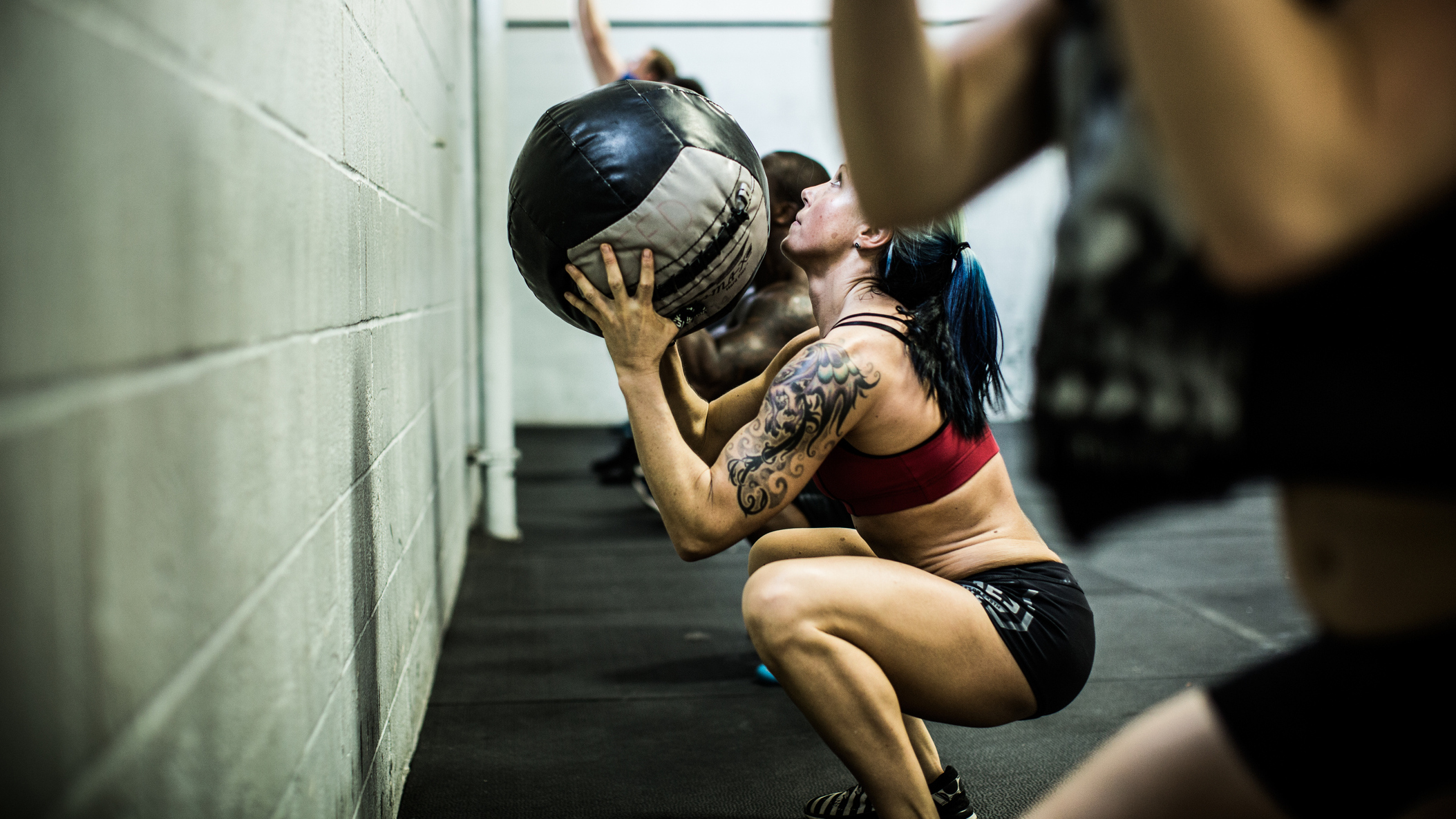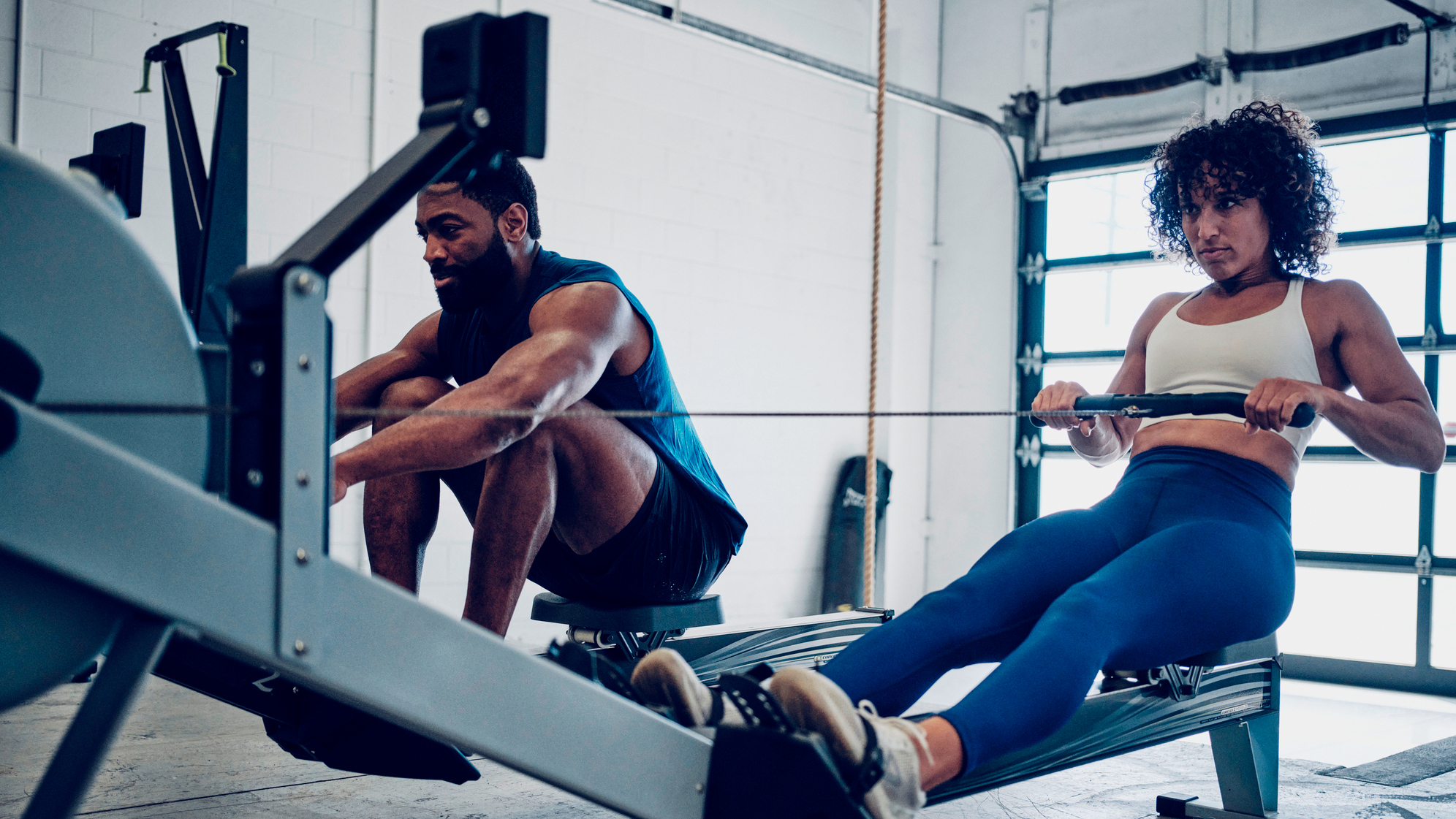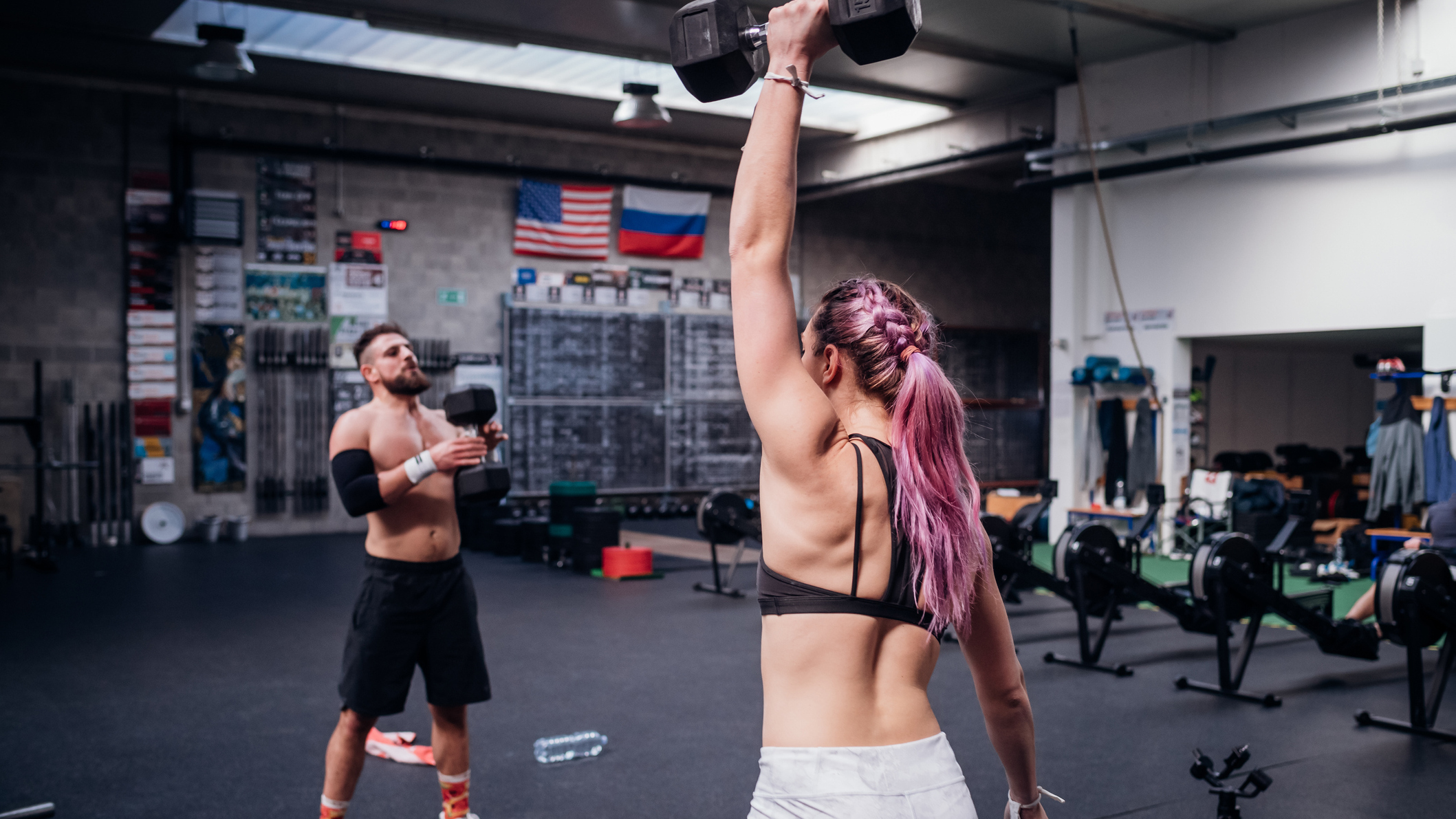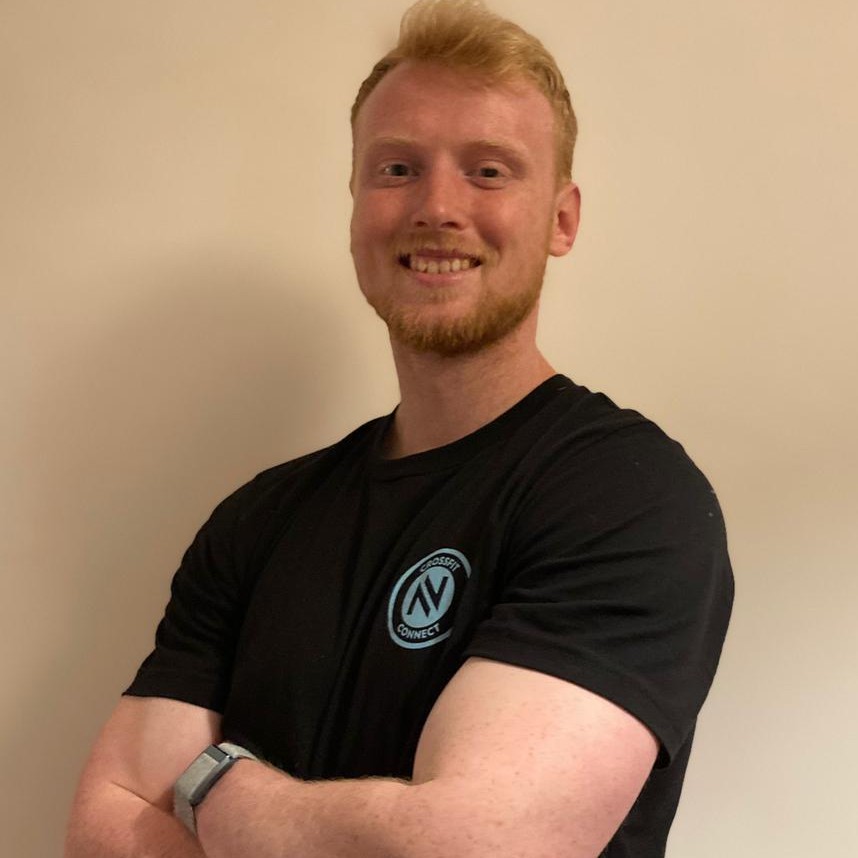Top-Tier CrossFit Athletes Set A 20-Minute Partner Workout And Coached Me Through It—Here’s What I Learned
This simple but deadly AMRAP comes courtesy of Emma McQuaid, Emma Tall, Aniol Ekai and Moritz Fiebig

I’ve been guilty of yelling “FASTER!” at elite athletes on TV while slouched on my couch in a mayonnaise-stained T-shirt. Now, however, I might think twice before dealing out any unsolicited advice.
The reason for this? I had the chance to train under the watchful eyes of some of the world’s top CrossFitters, and it was no joke.
I walked into Gold’s Gym in Berlin to be met with a fearsome sight; Reign Total Body Fuel-sponsored athletes Emma McQuaid, Emma Tall, Aniol Ekai and Moritz Fiebig (who is affectionately/intimidatingly referred to as “The German Steel”).
Among them they boasted arms thicker than my legs, topographical abs and several places at the CrossFit Games—the sport’s Super Bowl—earned at the European semi-final qualifying event the previous weekend.
The athletes set me and a group of willing gym-goers a simple 20-minute partner AMRAP (as many rounds as possible), each contributing a staple CrossFit exercise to a four-move circuit.
- Emma McQuaid: 20-calorie row split between two people
- Aniol Ekai: 20 wall balls split between two people
- Moritz Fiebig: 20 synchronized dumbbell snatches
- Emma Tall: 20 burpees over person split between two people—one person holds a plank while the other person completes burpees and jumps over them between reps.
Before you try it yourself, give yourself a head start by taking on board what I learned doing it under the watchful eye of the pros.
1. Sweat The Small Stuff
I’m a member of a CrossFit box and train six times a week, although I’ll be the first to admit I have more enthusiasm than ability. Still, I have a few local competitions under my belt and like to think I’m OK at “the sport of fitness”.
Get the Coach Newsletter
Sign up for workout ideas, training advice, reviews of the latest gear and more.
But one of the things that immediately set these Games-level athletes apart from your average class-goer was their attention to detail.

“Show me how you row,” McQuaid said, inviting an attendee to jump on a Concept2 RowErg in front of the class. The woman hopped into the hot seat and did a good job, but McQuaid had notes.
Play with the foot plate until you find a setting that feels comfortable and allows you to reach into the catch without being inhibited by your ankle mobility. Remember to keep the chain flat and drive with your legs first, then pull with your arms. Finally, adjust the damper settings to find one that allows you to pull big numbers.
“We want to make it as easy as possible,” she said. “It doesn’t matter how high the damper is if you can’t pull it.”
The other athletes were just as surgical with their movements. Tall, ranked Europe’s fourth fittest woman going into the Games, advised finding a rhythm during burpees and making every movement count, especially as you tire—every unnecessary shuffle is a waste of time.
Fiebig stressed that the power for a dumbbell snatch should come from the lower body: “Your arms are tiny compared to your legs.”
Spanish athlete Ekai zeroed in on the details of wall balls.
“Stand an arm’s length away from the wall. Don’t wait for the ball to come back down with your arms in the air or they will get tired during larger sets. Take them down to your sides to recover.”
If any one of these tips saves you one second, or spares your muscles from any extra fatigue, it could be the difference between first and second.
2. Don’t Stop Moving

To most people, a 20-minute metcon might sound like a bit of a slog. To CrossFit athletes, it’s par for the course.
As we reached the end, my partner and I broke up the snatches into two sets. Suddenly, I felt a considerable shadow loom over my left shoulder.
Then came Ekai’s commanding voice. “Come on, keep going, don’t stop.”
I looked at my partner. He looked at the 22.5kg dumbbells at our feet, then back at me. Each with a resigned look in our eyes, we reached down and saw off our set of 20.
Ekai was right. We could do it. It shows the mindset of athletes at the top of their game is different from ours. They’re used to reaching, and pushing beyond, their limits, and as a result they know when to hit the gas and when to pull back.
For the rest of us, our minds often tell us to stop when things become uncomfortable, but well before our limits.
3. Don’t Confuse Simple With Easy
The movements in this workout will be familiar to anyone who’s stepped into a CrossFit box. There’s nothing too heavy (just a standard dumbbell snatch at 22.5kg for men and 15kg for women) and no high-skill gymnastic moves like muscle-ups or legless rope climbs.
Yet by the end my muscles ached, I was drenched in sweat and my chest was heaving as my body put in an urgent order for oxygen.
“How did you find the class?” a friendly Fiebig asked after the workout. My monosyllabic response came between heavy breaths. “Good. Hard.”
“Ah, yes,” he said with a smile. “It’s often the simple movements that get you, because you have to keep moving.”

Harry covers news, reviews and features for Coach, Fit&Well and Live Science. With over a decade of training experience, he has tried everything from powerlifting to gymnastics, cardio to CrossFit, all in a bid to find fun ways of building a healthy, functional body.
